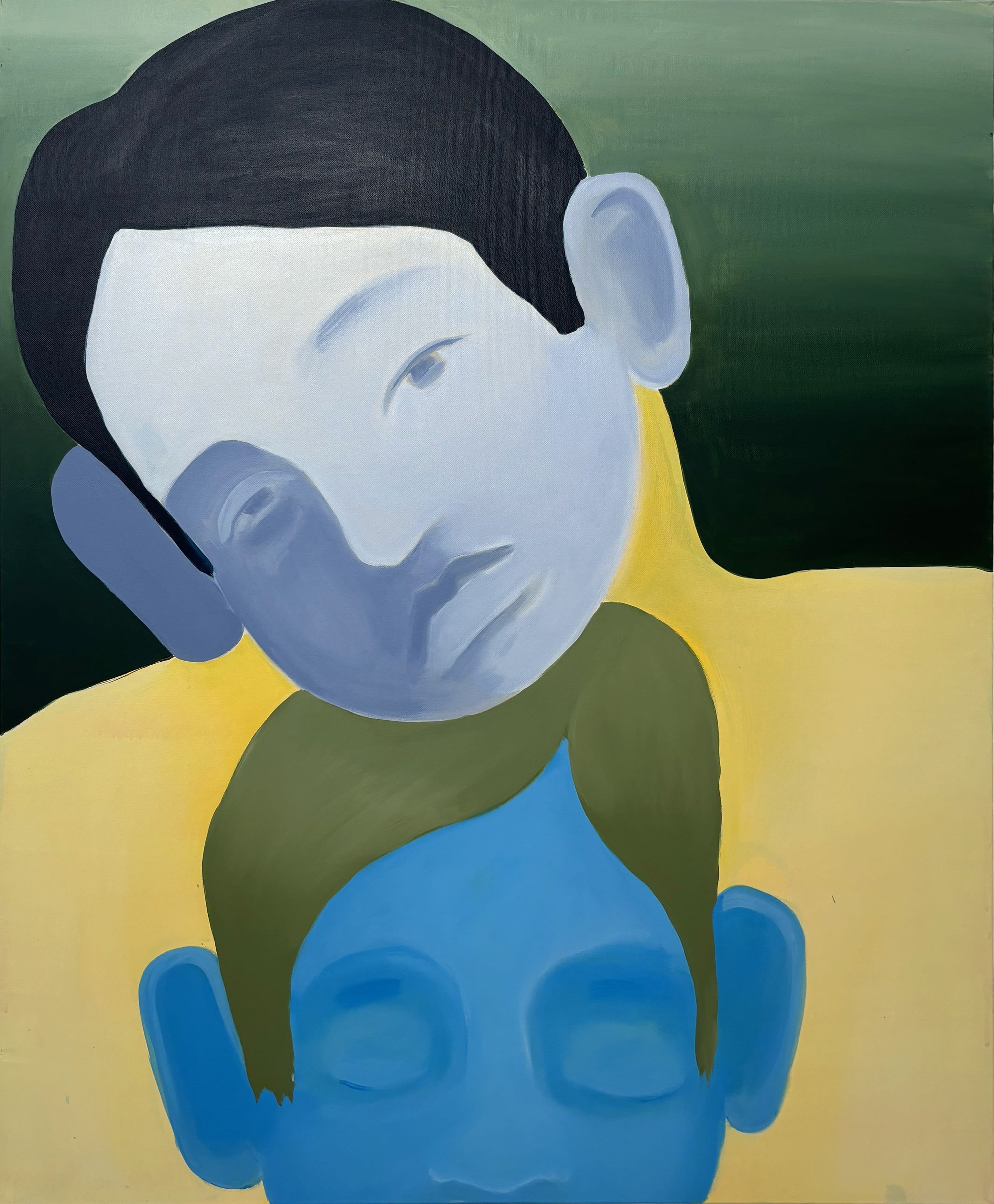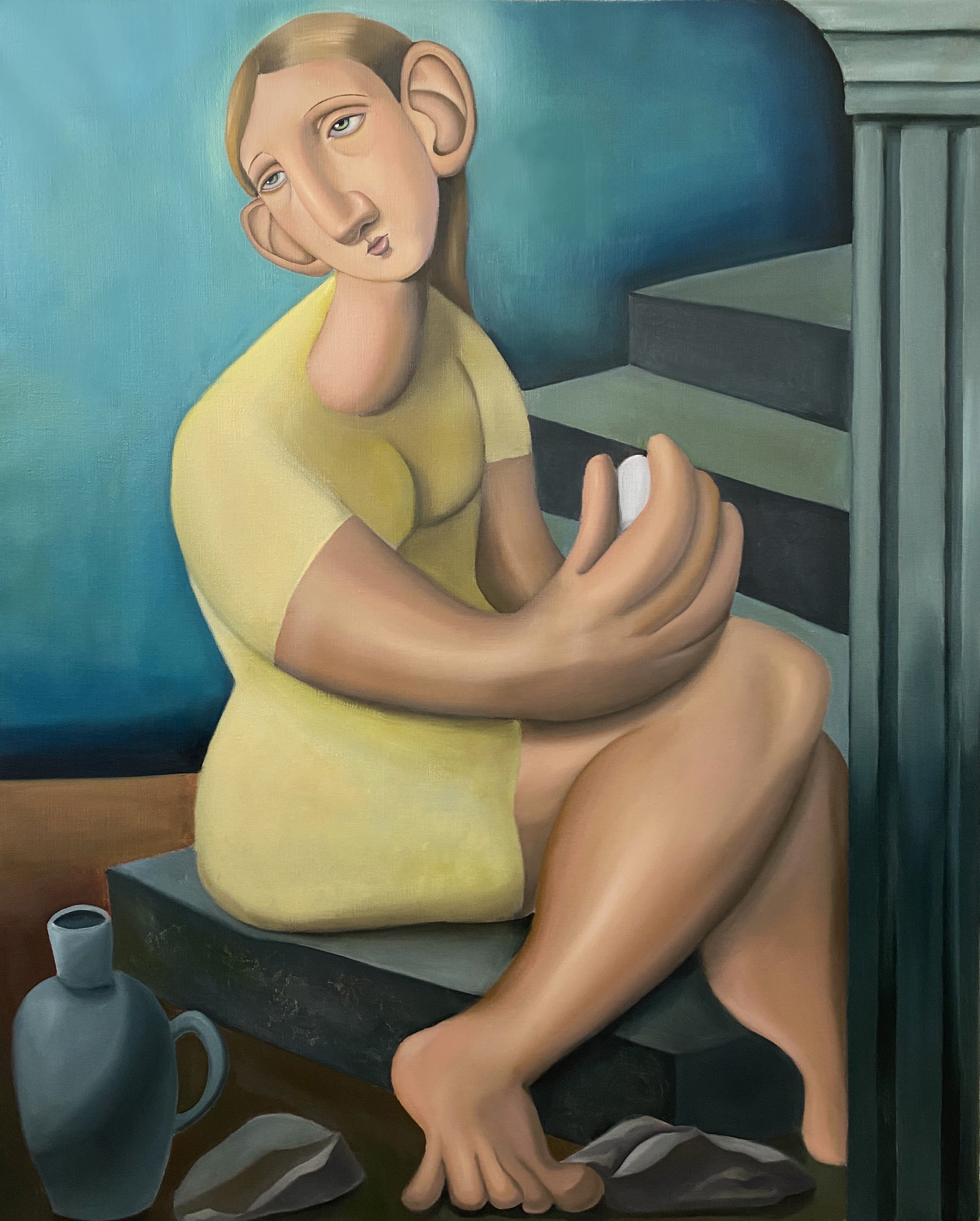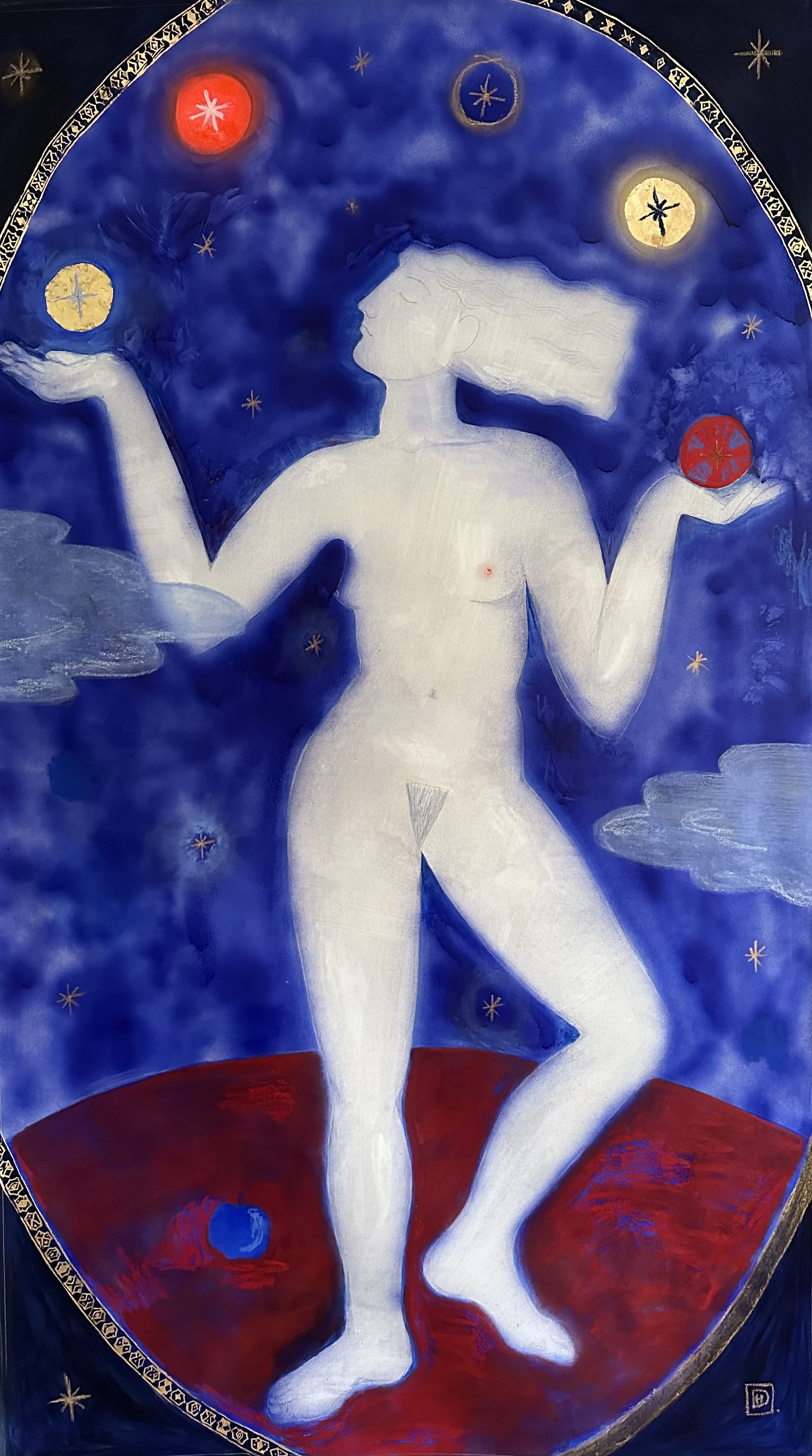RHODES is dedicated to supporting and uplifting emerging artists, many of whom are women. March 2025 is Women’s History Month, so here’s a highlight of some of the talented female artists we are honoured tp represent.
Morag Caister is an emerging contemporary British artist, acclaimed for her intimate portraits and unique style. She won the Sky Portrait Artist of the Year Award in 2022, and has works in the National Portrait Gallery’s permanent collection. Caister has quickly gained a dedicated fanbase due to the consistent quality of her portraits, ranging from life-size figures on canvas, to miniature monoprints made with only a couple of strokes.

Camille Cottier is a French artist, whose artistic practice explores the body, identity, and, most recently, human interaction and relationships. Cottier’s debut solo exhibition, You Are Not Alone, was created during her pregnancy at an artist residency in Naxos. Sticking to her usual neon colour palette, this collection featured many of her figures interacting and overlapping rather than standing alone, perhaps inspired by her life as a new mother.

Currently exhibiting in our Story Time exhibition, Genevieve Cohn is an American artist whose works reflect themes of feminine collaboration and communal strength. The dynamism between her heavy compositions and warm, playful colour palettes creates complexities that engulf her works in an uneasy contrast of joy and intensity, reflecting the real world we are all experiencing.

Elina Ojakangas, a Swedish-Finnish painter, is known for her distorted, melancholic figures. They often reflect a period of emotion that Ojakangas has experienced, as she translates these intense feelings into twisted limbs and exaggerated faces. Ojakangas utilises the potential of contrasting her form with her style. Her solo show, Those Moments After, exemplifies this, with sharp lines and glinting eyes juxtaposed against soft, curvy bodies and non-descript backgrounds.

German-born artist Delia Hamer’s works reflect more of her Mediterranean childhood summers than her German roots. While this is seen in her tropical colour palettes, it’s her figures that depict both Hamer’s and a universal experience of femininity. Her figures often stand alone, nude, surrounded by mythical creatures and natural motifs. Hamer’s works tell a story of the joys of female solitude, and the importance of a connection to ourselves and to nature.





